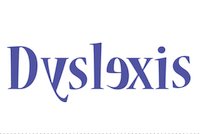FAQ
Dyslexia is the most common cause of reading, writing, and spelling difficulties. Of people with reading difficulties, 70-80% are likely to have some form of dyslexia. It is estimated that between 5-10% of the population has dyslexia, but this number can also be as high as 17%. The characteristics of dyslexia range from mild to severe. Because dyslexia may not be recognized and diagnosed in some individuals, they do not receive the necessary treatment; others may not disclose that they have dyslexia. These mitigating factors make the prevalence of dyslexia difficult to precisely determine.
The description of “dyslexia” was first used by a German ophthalmologist, Rudolf Berlin, when he examined a patient who suffered difficulty in learning to read and write, but showed normal intelligence and physical ability. Others described this same phenomenon around this time period, in the 1880s and 1890s, without using the “dyslexia” description. A British ophthalmologist, James Hinshelwood published a series of medical papers on the subject. In 1925, neurologist Samuel T. Orton had a patient who could not read, similar to stroke victims who lose their ability to read. In contrast, the patient had no brain damage, so Orton started to study different causes of reading difficulties unrelated to brain damage, and brought these studies to broader attention. More extensive dyslexia research has been conducted since the 1950s.
Dyslexia occurs in children with all intelligence levels. Frequently, dyslexics have above average ability. The incidence in males and females is approximately equal. Dyslexia is found all over the world, and in all socioeconomic and ethnic groups.
Although it used to be thought that more boys experienced dyslexia than girls, current research has indicated that dyslexia occurs in approximately equal proportions.
Experts say that there are not more dyslexics than in previous times.
Aside from difficulty with pre-literacy learning like rhyming and letter recognition, the most common sign is when a child fails to learn to read and this failure is unexpected based on his or her other abilities. Please click on the “Am I dyslexic” page.
Dyslexia has been linked to certain genes that control how the brain develops. It is an inherited condition that affects the parts of the brain that process language. Dyslexics process language using both the left and right hemispheres of their brain, while non-dyslexics process language on the left side only.
Dyslexia is best and accurately identified by the use of specific tests focusing on visual, auditory and motor reading, writing and spelling skills. These tests should be considered once visual and hearing tests have been completed.
There is no cure because dyslexia is not a disease, but a brain difference in processing language. With proper instruction in an Orton-Gillingham based system and hard work, people with dyslexia are able to succeed academically and professionally. Dyslexia is a life long condition, but the proper intervention can have a positive effect on a persons symptoms and outcomes.
The following is list of successful people who showed characteristics of dyslexia: Steve Jobs, Richard Branson, Charles Schwab (Entrepreneurs), Jennifer Aniston, Steven Spielberg (Film), Tim Tebow, Michael Phelps, Ellie Hawkins (sports), Jamie Oliver (Chef), Albert Einstein, Leonardo Di Vinci, Thomas Edison, Alexander Graham Bell (inventors) Ann Bancroft (Explorer), Agatha Christie, Hans Christian Anderson (Authors), Winston Churchill, Woodrow Wilson (politics), David Bois (Lawyer)…. and many many more!
The following is list of successful people who showed characteristics of dyslexia: Steve Jobs, Richard Branson, Charles Schwab (Entrepreneurs), Jennifer Aniston, Steven Spielberg (Film), Tim Tebow, Michael Phelps, Ellie Hawkins (sports), Jamie Oliver (Chef), Albert Einstein, Leonardo Di Vinci, Thomas Edison, Alexander Graham Bell (inventors) Ann Bancroft (Explorer), Agatha Christie, Hans Christian Anderson (Authors), Winston Churchill, Woodrow Wilson (politics), David Bois (Lawyer)…. and many many more!
No. Programs involving multisensory structured language techniques have been shown to help adults as well as children. Early intervention is better, but intervention at any time can be effective.
